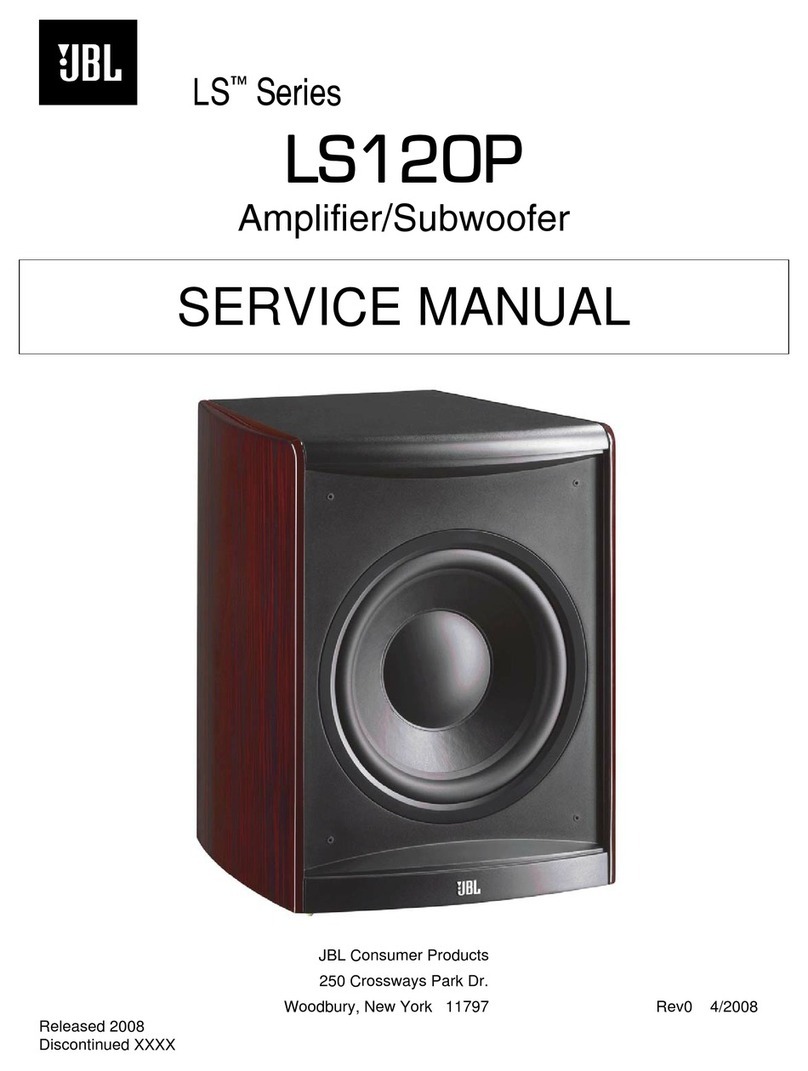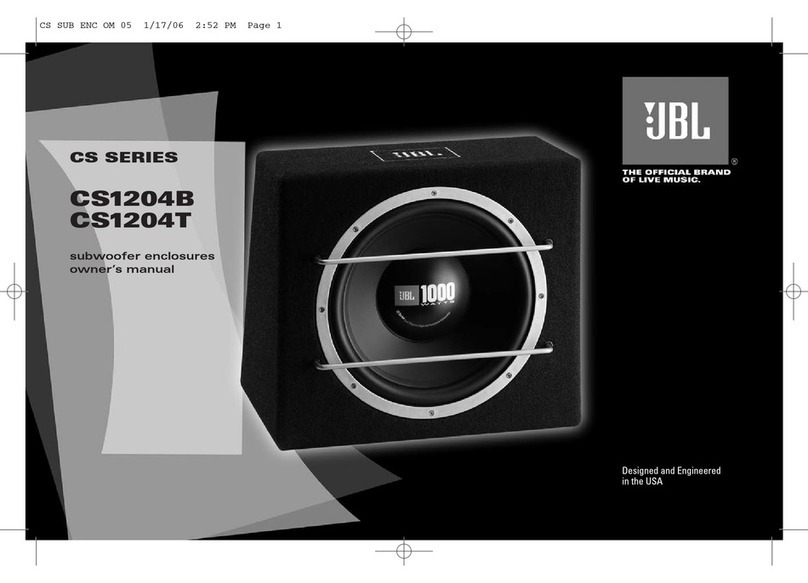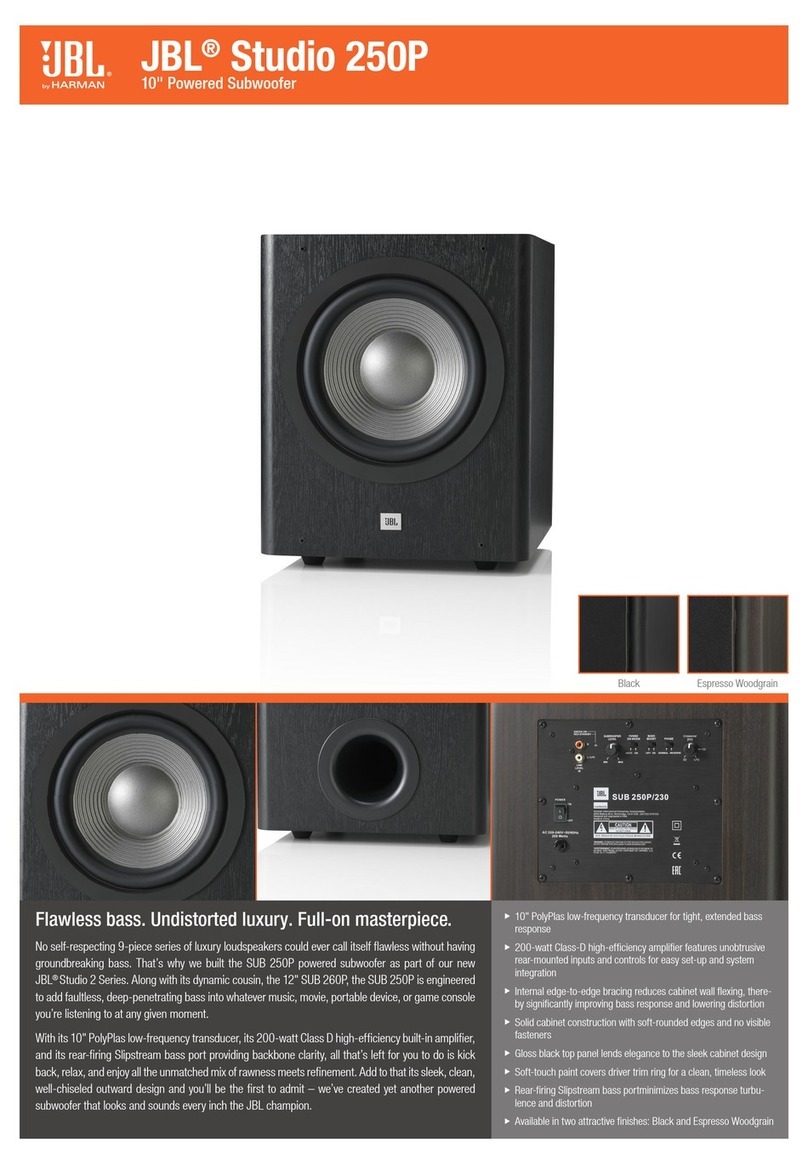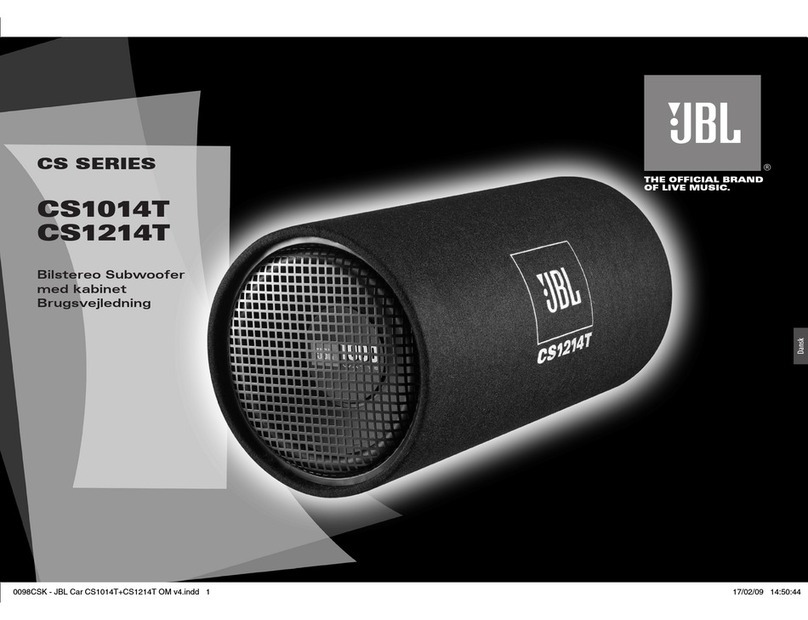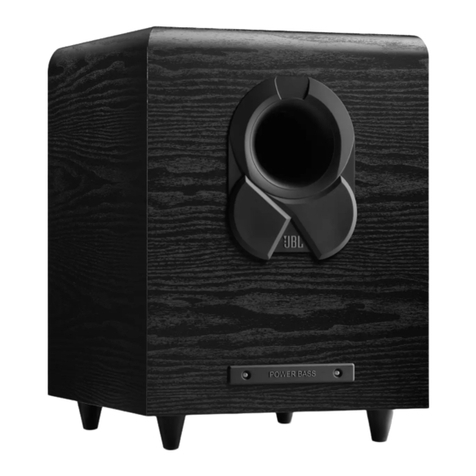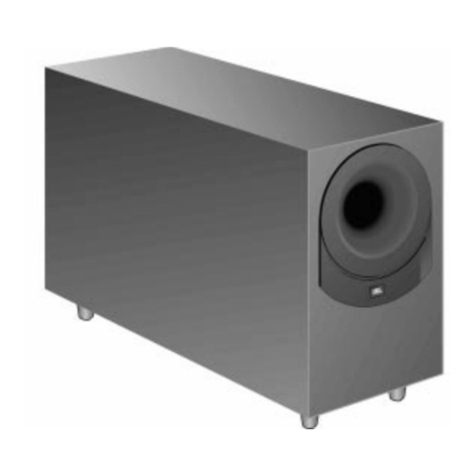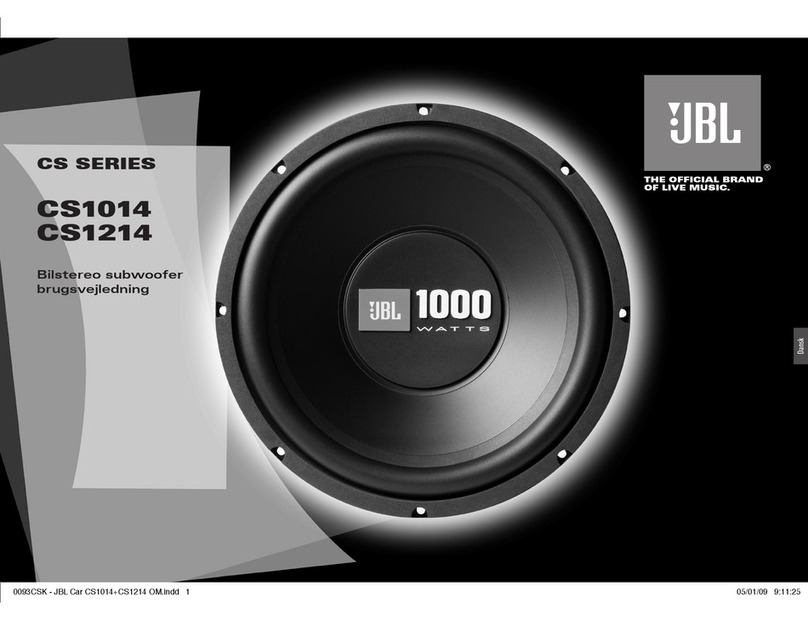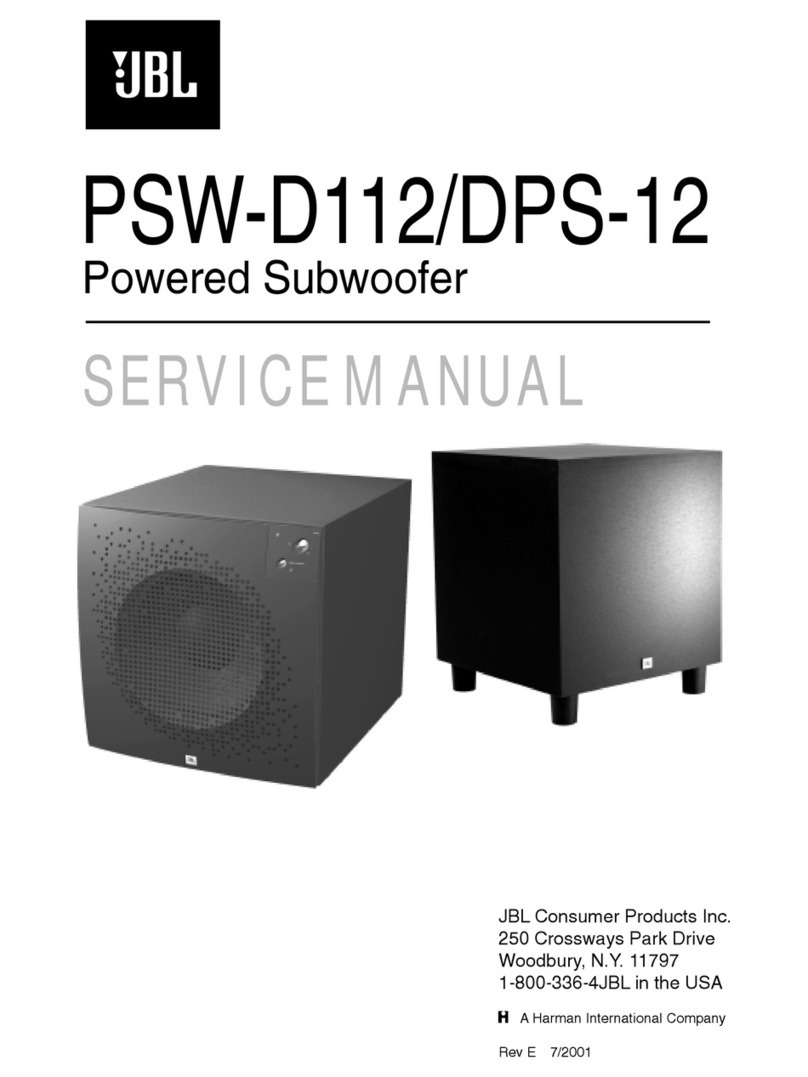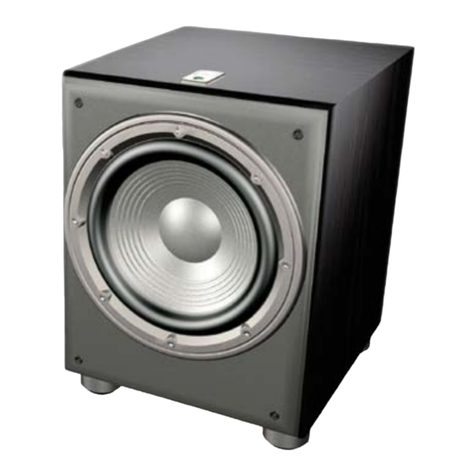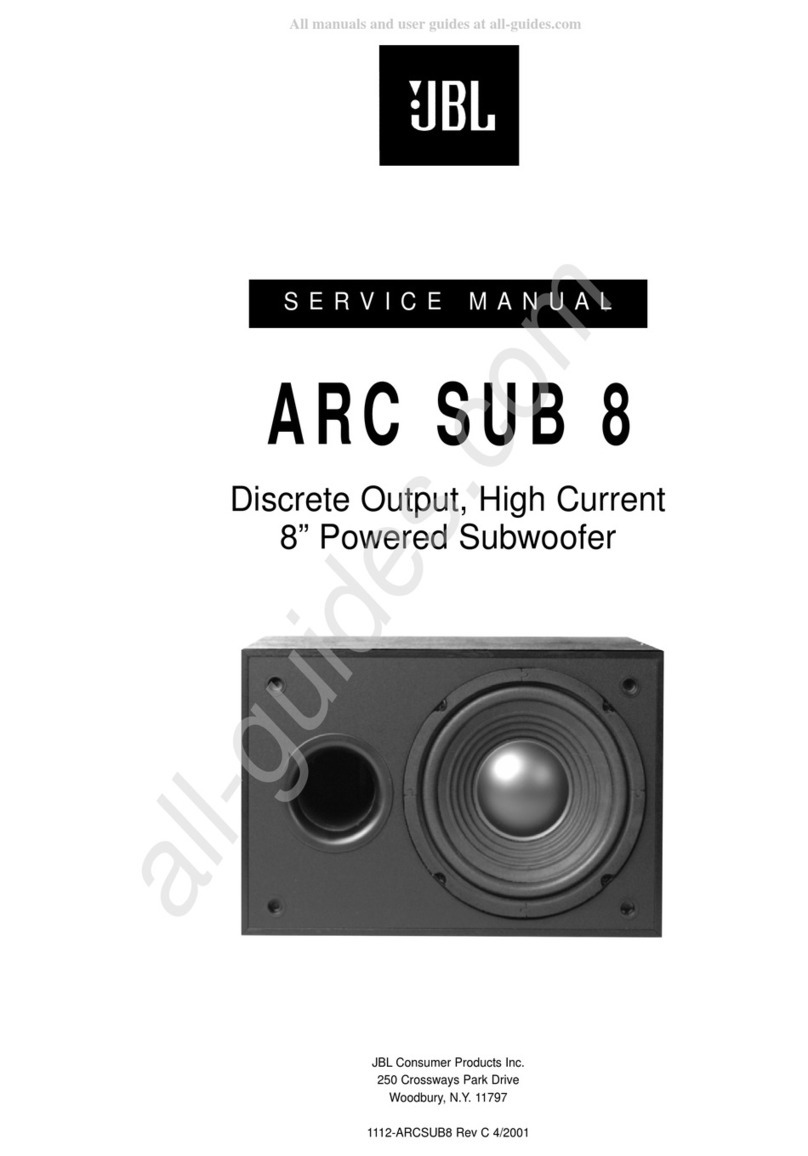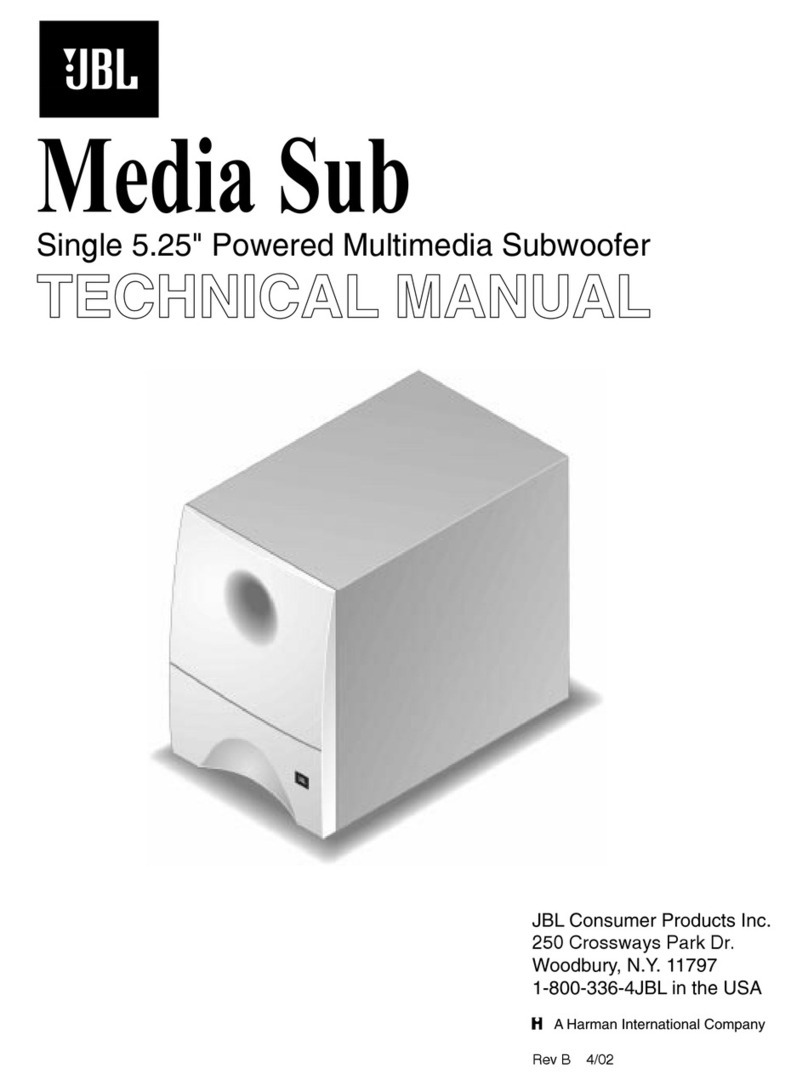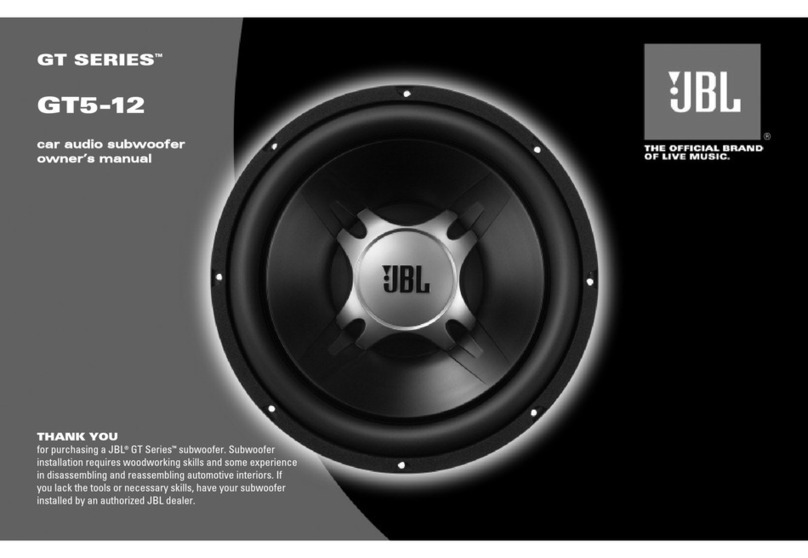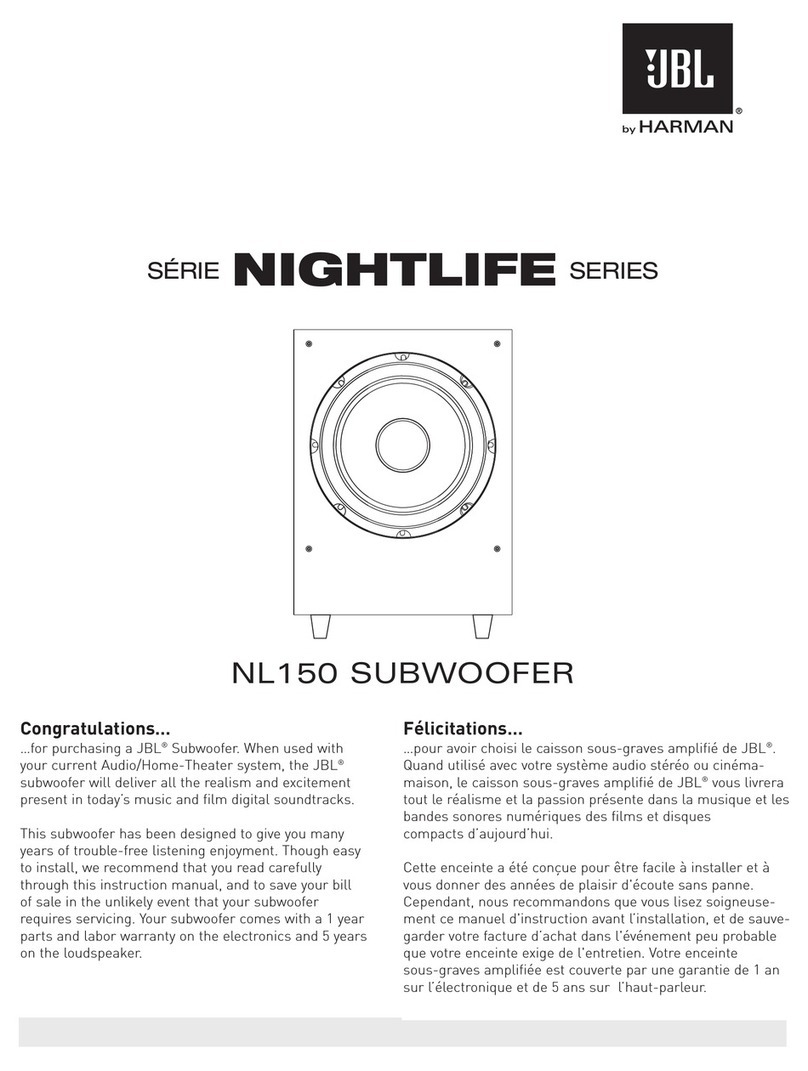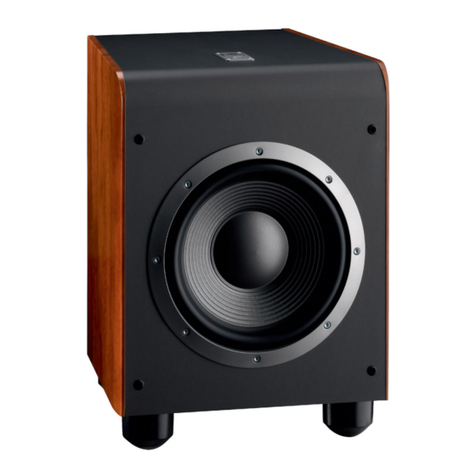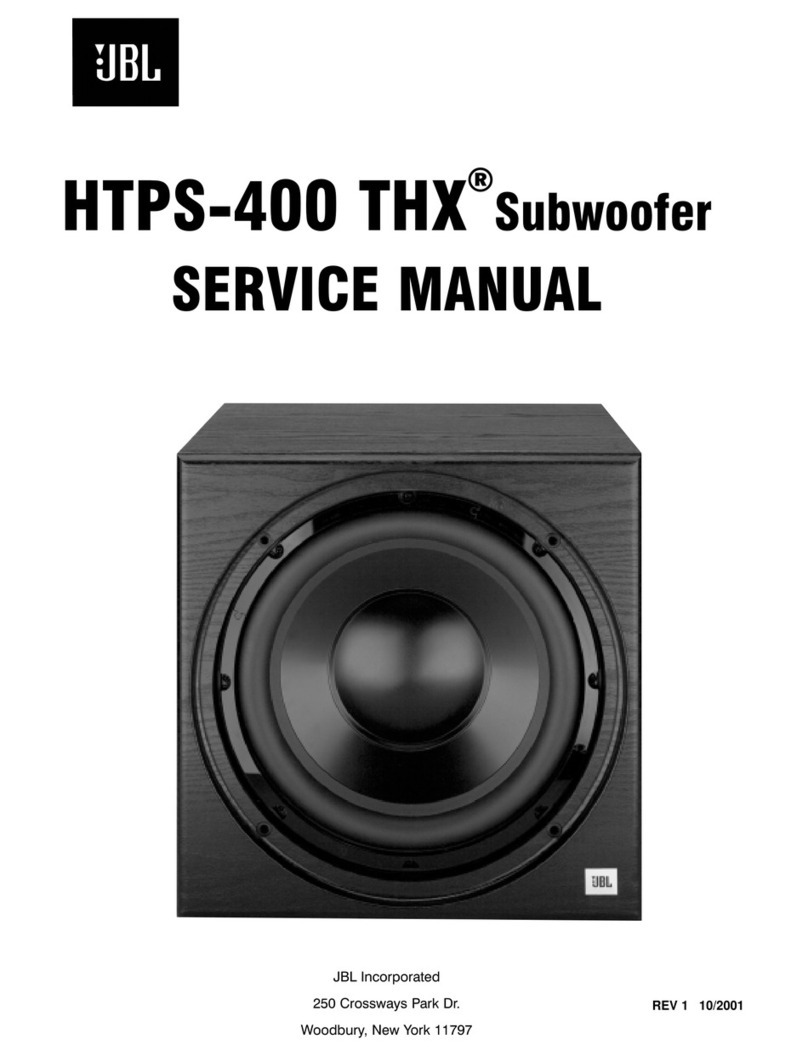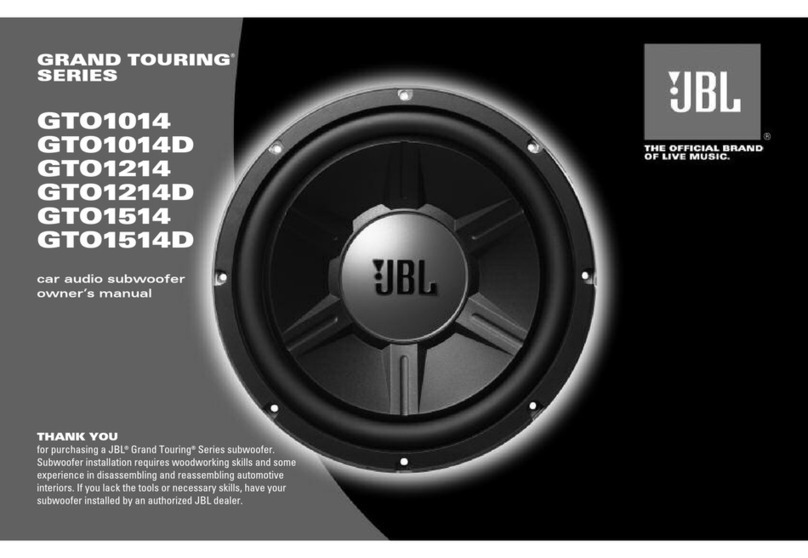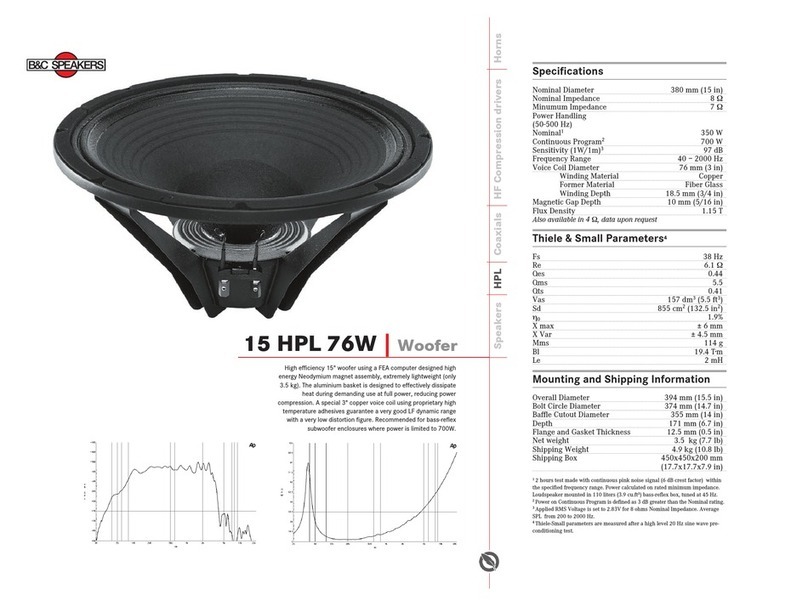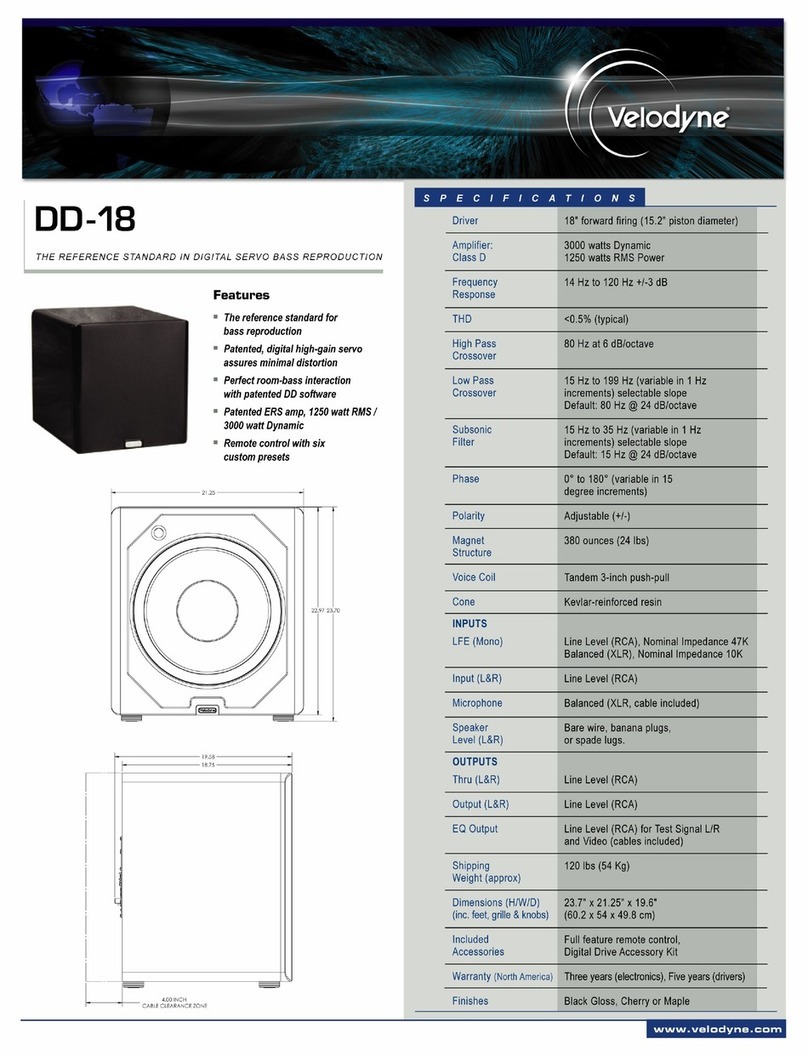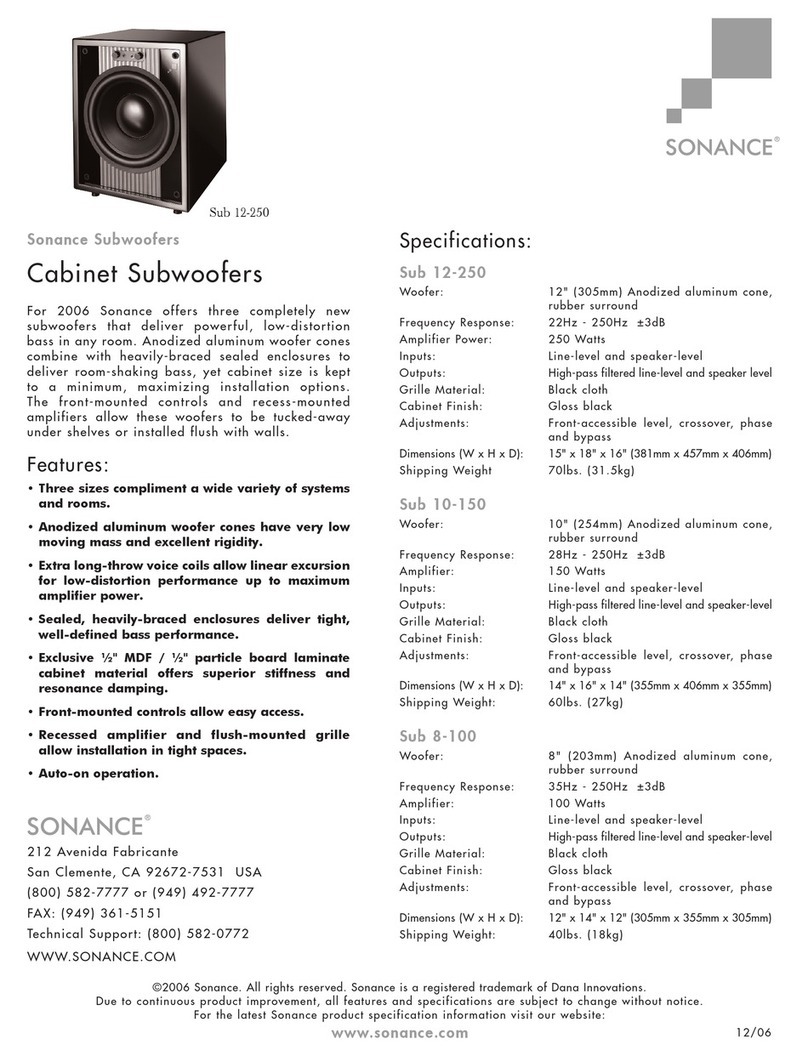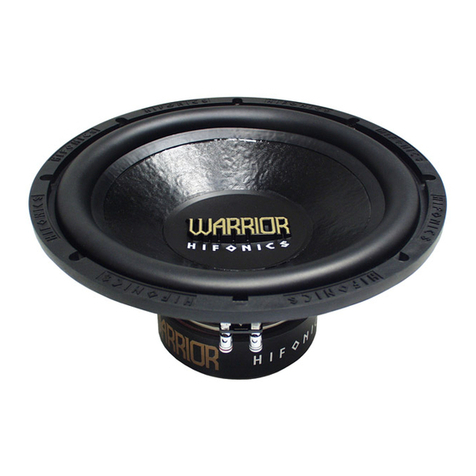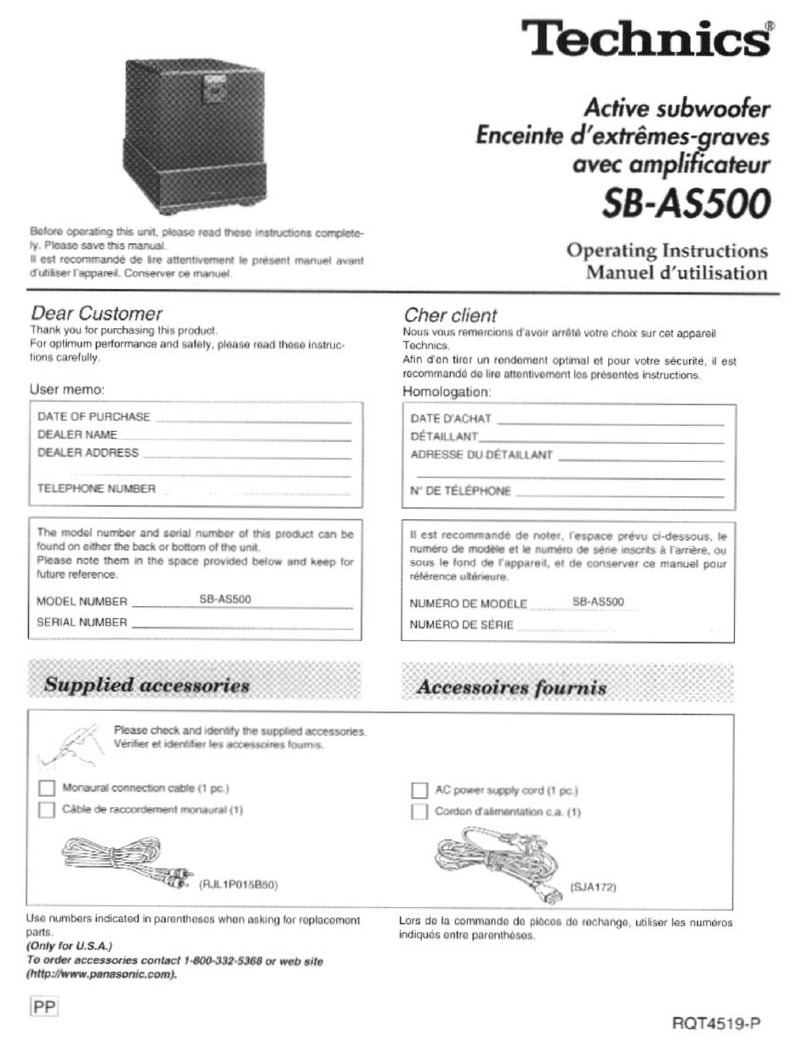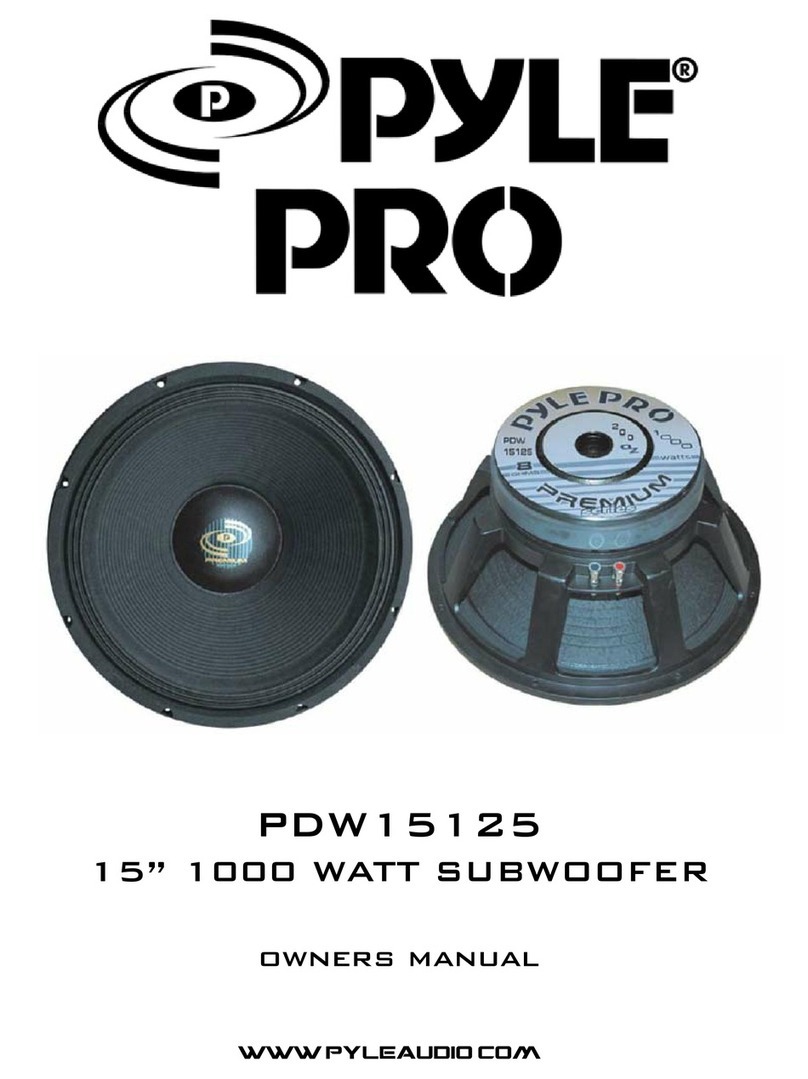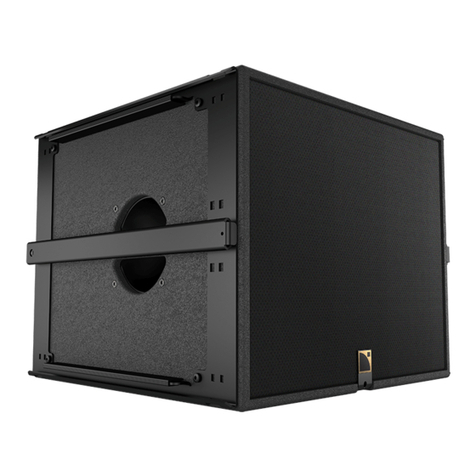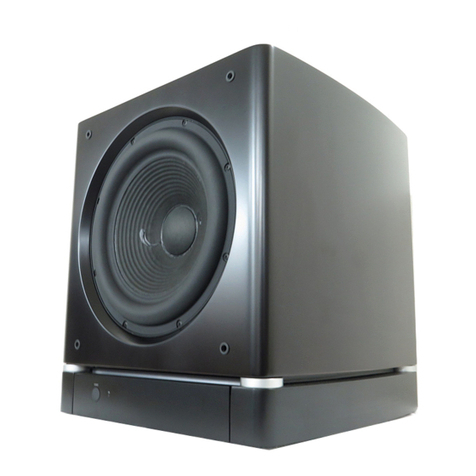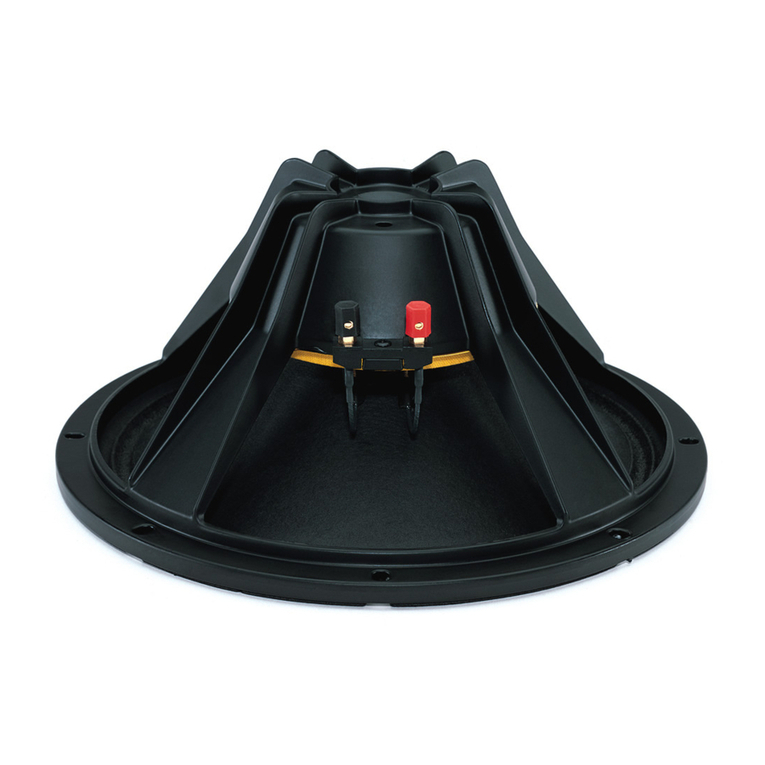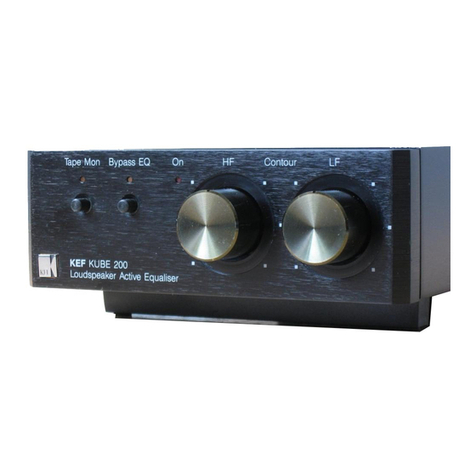
1. TROUBLE SHOOTING BEFORE OPENING
Check connections, control settings, driver and other possible
external problems. If there is Output, determine if all controls
and Inputs function properly. Rotate Pots over full range while
applying lateral and vertical oscillating forces to locate possible
intermittent function. High Level Inputs should be tested
individually both differentially (signal from "-" to "+" with normal
output) and in common mode (signal from low level ground to
both "+" and "-" shorted together, giving virtually no output).
While passing a signal, corner drop the enclosure a few inches
to expose possible intermittent problems. Check woofer for
rubbing of voice coil or tears in cone or surround. Check
cabinet for loose extraneous articles which may have been
pushed into port.
2. REMOVING THE AMPLIFIER.
There are voltages and hot components at many points in
the amplifier which can, if contacted, cause personal injury.
Be extremely careful. Any adjustments or service
procedures that require operation of the amplifier out of its
enclosure should be performed only by trained service
personnel. Refer to PCB drawings for locations of hazards
and familiarize yourself with their locations before starting.
A. Remove the subwoofer grille.
B. Remove the (4) 1”Black PPH screws attaching the
woofer to the cabinet.
C. Remove the woofer, unplug the two connecting wires.
D. Remove the (8) ¾” screws black pph screws
attaching the ampifier assembly to the cabinet.
E. Remove the ampifier assembly.
F. For access to the input panel, first remove the three
outer screws. Remove knob and nuts from
potentiometers. Cut away the sealant securing the
cover to the faceplate. The input PCB should now
pull out completely.
3. TROUBLE SHOOTING AFTER REMOVAL
Verify AC plug is disconnected. See WARNINGS in section
2.
To prevent loose hardware from reducing safety spacings, it
is essential that all hardware be replaced in the same
manner as it was removed, with lock washers under all nuts,
proper torque on screws and thread locking sealer on the
transformer nuts.
If line core or strain relief are replaced, it is necessary to
seal them completely to panel with an approved conformal
coating to prevent air "whistling" through any openings from
woofer pressure.
To reduce the risk or electric shock and/or fire,
replace items as marked on schematic with the
safety marking only with the exact replacements
listed in the safety component list, page 2. If
exact replacements are not available, order them from the
factory or an authorized service center.
A. Check fuse F1. If blown visually check transformer for
discoloration, and large capacitors (C1, C2) for bulges
or venting. Check for shorts with an Ohmmeter,
(see schematic).
B. With ohmmeter, verify voice coil of woofer is 3.9
ohms, and windings of transformer are continuous.
C. Examine board and wiring for obvious damage,
broken or poorly soldered connections, or
discoloration.
D. Repair or replace items identified above.
E. For live power testing, attach a 4 ohm 100 watt
resistor to the output wires.
F. If the LED is not on, check for fuse continuity and
then for cold solder joints on CMC1 and bridge diode.
G. With a signal present at the input, the output to the
power amp is at pin #8 of U1. If the signal is not
present at pin 8, there is a problem with preamp
section. Most likely, a cold solder joint will be the
7
Amplifier/Subwoofer ARC SUB10/DS-10
CAUTIONS AND WARNINGS
BEFORE THIS AMPLIFIER IS PLUGGED IN, make sure its rated voltage corresponds to the voltage of the AC power
source to be employed. Failure to use the correct voltage could cause damage to the amplifier when the AC power
cable is plugged in. Do not exceed the rated voltage by more than 10%; operation below 90% will degrade
performance or cause the unit to shut off.


